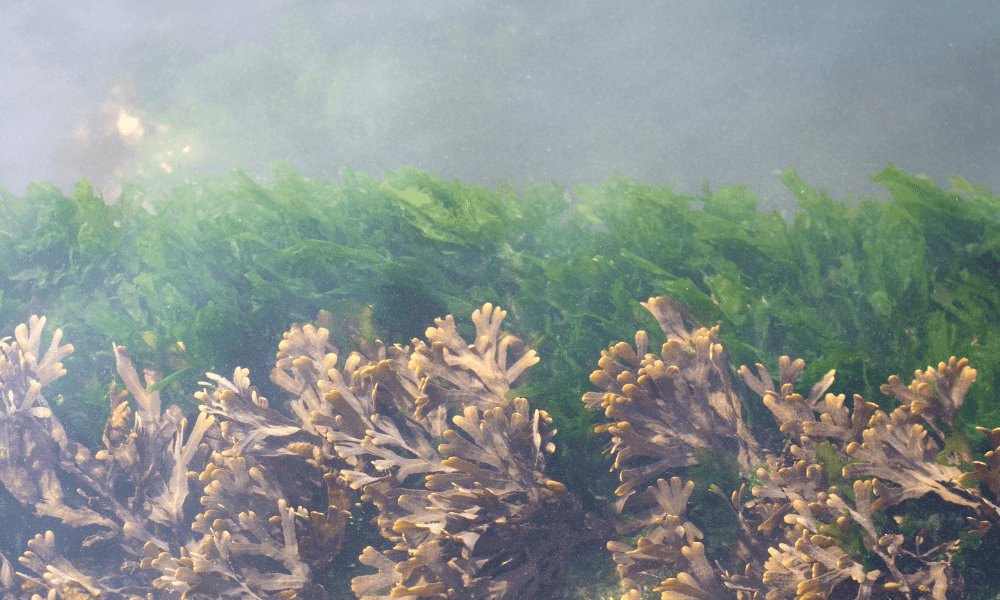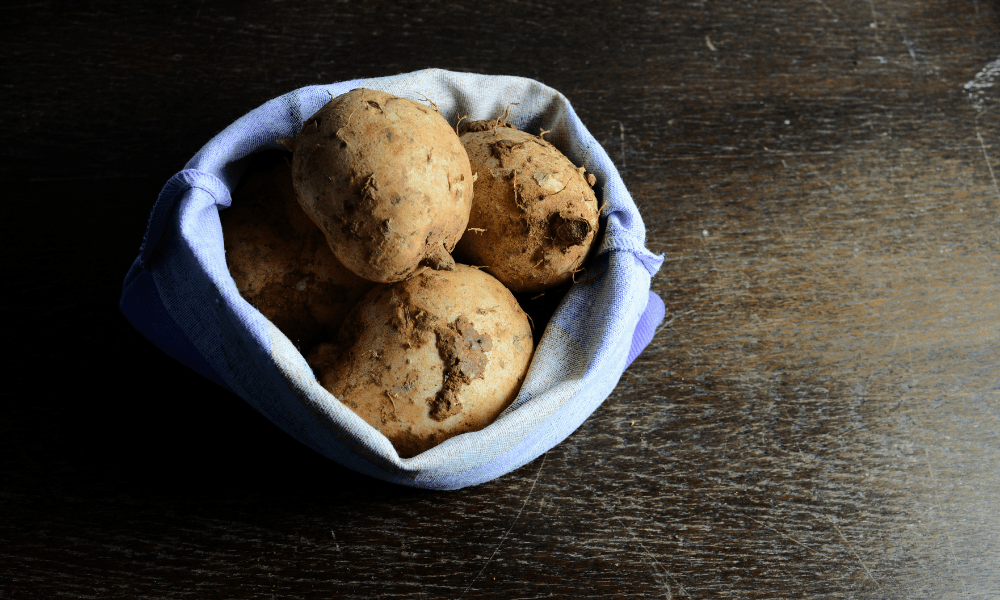In almost every article that deals with health and nutrition, you come across this term: antioxidants. Many people know it, but only a few people know what antioxidants are or what exactly they do in the body. With this article, we want to offer you a scientifically based explanation.
IT'S WORTH READING!
AT THE END OF THE ARTICLE WE WOULD LIKE TO GIVE YOU A LITTLE JOY WITH A VOUCHER!
Antioxidants – Always ready!
Our organism is constantly confronted with harmful influences: from smoking to inflammation to obesity - the body is constantly exposed to so-called free radicals. They burden it and - if they get out of hand - cause oxidative stress that can no longer be adequately neutralized.
This oxidative stress can lead to tissue damage, which in turn can cause inflammation. If this inflammation becomes chronic, it can lead to a number of diseases such as autoimmune diseases, high blood pressure, type 2 diabetes or even cancer.
Antioxidants are - in short - chemical compounds that fight free radicals. They therefore reduce cell damage.
Your body also has its own antioxidant defenses to keep free radicals at bay. These are called endogenous antioxidants. Lipoic and uric acid are among them, as is coenzyme Q.
Antioxidants that come from outside the body are called exogenous. These include, for example , vitamin C and vitamin E , as well as all essential antioxidant substances that must be supplied through food, e.g. fruit and vegetables.

Free radicals – harmful or even necessary?
Free radicals are created when the body processes food and reacts to the environment. If they are not sufficiently neutralized by the organism, oxidative stress can occur. This in turn damages cells and body functions.
Because free radicals are constantly being formed in our bodies, we need various antioxidants to counteract them. Without their influence, the free radicals would quickly cause serious damage.
But despite everything, free radicals also perform functions that are important for health. The body uses them to a certain extent to neutralize bacteria and viruses. This is shown, for example, by a study published in the journal BioMed Research International .
In order to avoid excessive oxidative stress, the body must maintain a balance between antioxidants and free radicals.
If you want to reduce the oxidative stress your body is exposed to, then you should
- Avoid cigarette smoke, air pollution, alcohol and high blood sugar levels, as a 2006 study suggests
- Consume fewer unsaturated fatty acids, as studies published in the journal Prostaglandins, Leukotrienes & Essential Fatty Acids suggest
- Pay attention to the oxygen levels in your body, as described in a study entitled “Generation of reactive oxygen species by the mitochondrial electron transport chain“
Antioxidants galore
As mentioned above, the adequate supply of exogenous antioxidants is important. But vitamins are not the only thing needed to fight free radicals. Various foods support this through the additional substances they contain.
- The pseudocereal quinoa, for example, is very rich in beneficial plant substances such as saponins, phenolic acids, flavonoids and betacyanins. Many of these compounds can act as antioxidants and neutralize free radicals in the body.
- Amaranth is also particularly rich in phenolic acids. These are plant substances such as gallic acid, p-hydroxybenzoic acid and vanillic acid, which act as antioxidants.
- The antioxidants contained in papain in papaya are said to prevent free radicals in the body from disrupting important metabolic processes, just like astaxanthin found in trout, microalgae, yeast and shrimp. It can also reduce tissue-damaging acute-phase proteins and DNA-damaging biomarkers.
- Grapefruit seed extract (GSE) , the curcumin contained in turmeric or OPC , which is found in many foods such as apples, cinnamon, coconuts, blackberries or red wine and is 18.4 times as strong as vitamin C or 50 times as strong as vitamin E, can also significantly reduce oxidative stress.
- Flavonoids, found in a wide range of plants, fulfil a range of different functions, such as UV protection or attracting pollinators. The flavonoids found in fruit and vegetables are relevant to humans and their diet. They are among the most common polyphenols and are said to have particularly antioxidant properties.
Because antioxidants are either water-soluble or fat-soluble, they work in different ways in the body. Water-soluble antioxidants exert their effects in the fluid inside and outside cells, while fat-soluble antioxidants work primarily in cell membranes.
Where are the antioxidants? In here!
How do you measure the antioxidant content in a food? How do you know which foods have particularly high antioxidant content?
Scientists use an analysis called Ferric reducing ability of plasma (FRAP). The FRAP analysis - which was presented in the journal Analytical Biochemistry - determines how well a certain free radical is neutralized. The higher the FRAP value, the more antioxidants the food contains.
In addition to the FRAP analysis, there is also the ORAC value ( Oxygen Radical Absorbance Capacity ). This also measures the antioxidant properties of foods.
But here we have five foods for you that can score points with a high FRAP value.
Dark chocolate
Based on the FRAP analysis, dark chocolate has up to 15 mmol of antioxidants per 100 grams. Among other things, consuming cocoa-containing products such as dark chocolate can lower systolic blood pressure (the upper number) and diastolic blood pressure (the lower number).
Pecans
Pecans are a type of nut native to Mexico and South America. They are a good source of healthy fats and minerals and contain high amounts of antioxidants. A study published in the journal Nutrition Research shows that pecans contain up to 10.6 mmol of antioxidants per 100 grams based on FRAP analysis. It was also found that study participants who consumed 20 percent of their daily calories from pecans had much higher levels of antioxidants in their blood.

Blueberries
Low in calories and packed with nutrients - that's how you can describe blueberries. The FRAP analysis shows that they contain up to 9.2 mmol of antioxidants per 100 grams. In a study published in 2016, the anthocyanins they contain also showed that they can reduce the risk factors for heart disease by lowering blood pressure and LDL cholesterol levels.
Strawberries
When most of us hear the word "berry" we probably think of strawberries, probably the most popular fruit on the planet. 5.4 mmol of antioxidants per 100 grams according to FRAP analysis. So they are not only really delicious, but also very healthy for your body!
Here too, a study with the somewhat cumbersome title “Anthocyanin supplementation improves serum LDL- and HDL-cholesterol concentrations associated with the inhibition of cholesteryl ester transfer protein in dyslipidemic subjects” confirmed that the anthocyanins contained in strawberries have a positive influence on cholesterol levels and can help reduce the risk of heart disease.
Cabbage
Admittedly, most people probably don't find cabbage as tasty as blueberries or strawberries. Nevertheless, this vegetable from the cruciferous family is also a valuable weapon in the fight against oxidative stress. Cabbage is one of the most nutritious vegetables on the planet and is also rich in vitamins A, K and C. It is also rich in antioxidants and provides up to 2.7 mmol per 100 grams. A study published in the Nutrition Journal confirms this.

And what about dietary supplements?
The general consensus is that taking antioxidant supplements is not harmful to health. They reduce damage through their antioxidant ingredients.
However, excessive intake of isolated antioxidants can also have negative effects and even promote oxidative damage instead of preventing it. This phenomenon is referred to as “The antioxidant paradox” in a study published in the journal The Lancet .
If you take antioxidants as a dietary supplement, you should always follow the manufacturer's dosage recommendations and only choose high-quality antioxidants .
Conclusion: Without antioxidants it doesn’t work
Antioxidants are important chemical compounds for our body that are needed, among other things, to fight free radicals.
You often find them in fruits and vegetables, whose secondary plant substances are rich in them.
AS PROMISED, YOU WILL RECEIVE A 10% VOUCHER ON OUR ANTIOXIDANTS: OPC Premium , Liposomal OPC , Grapefruit Seed Extract , Papain
SIMPLY COPY THE CODE ANTIOXIDANTS10 AND ENTER IT AT CHECKOUT.
Click here for the products
[1] https://www.ncbi.nlm.nih.gov/books/NBK21662/
[2] https://pubmed.ncbi.nlm.nih.gov/24587990/
[3] https://pubmed.ncbi.nlm.nih.gov/9787133/
[4] https://www.ncbi.nlm.nih.gov/pmc/articles/PMC1448694/
[5] https://pubmed.ncbi.nlm.nih.gov/9844997/
[6] https://pubmed.ncbi.nlm.nih.gov/11948241/
[7] https://pubmed.ncbi.nlm.nih.gov/9357853/
[8] https://pubmed.ncbi.nlm.nih.gov/8660627/
[9] https://pubmed.ncbi.nlm.nih.gov/20096093/
[10] https://pubmed.ncbi.nlm.nih.gov/19910929/
[11] https://www.sciencedirect.com/science/article/abs/pii/S0271531706001278
[12] https://pubmed.ncbi.nlm.nih.gov/27846846/
[13] https://pubmed.ncbi.nlm.nih.gov/20096093/
[14] https://pubmed.ncbi.nlm.nih.gov/19640950/
[15] https://pubmed.ncbi.nlm.nih.gov/20096093/
[16] https://pubmed.ncbi.nlm.nih.gov/10791396/

















